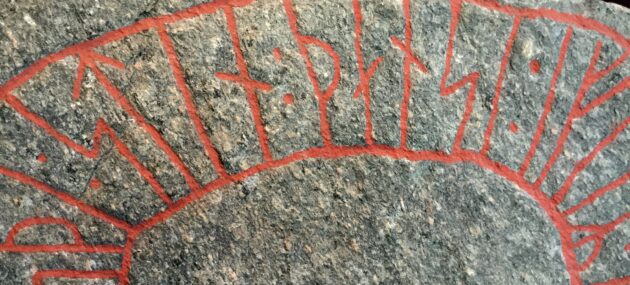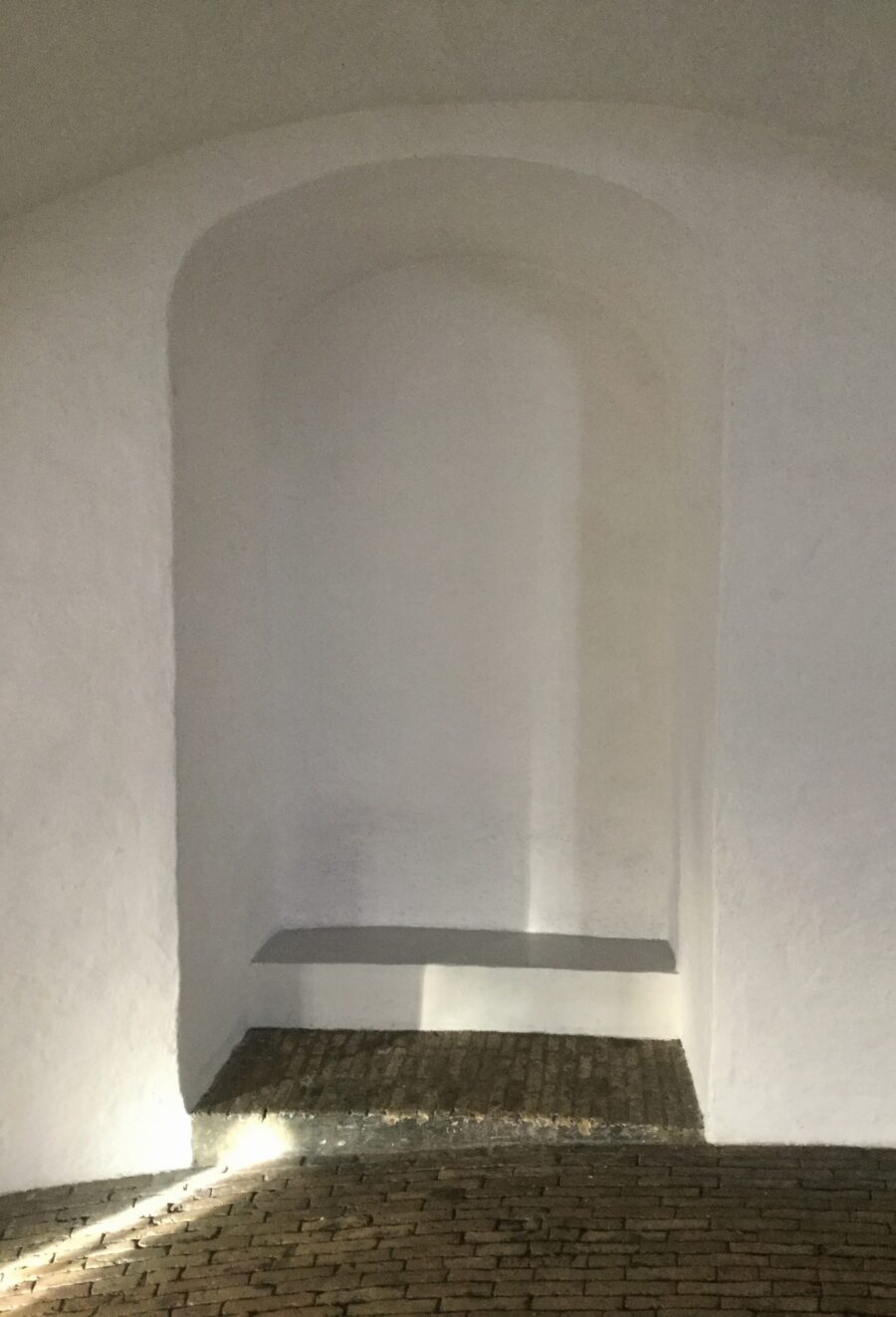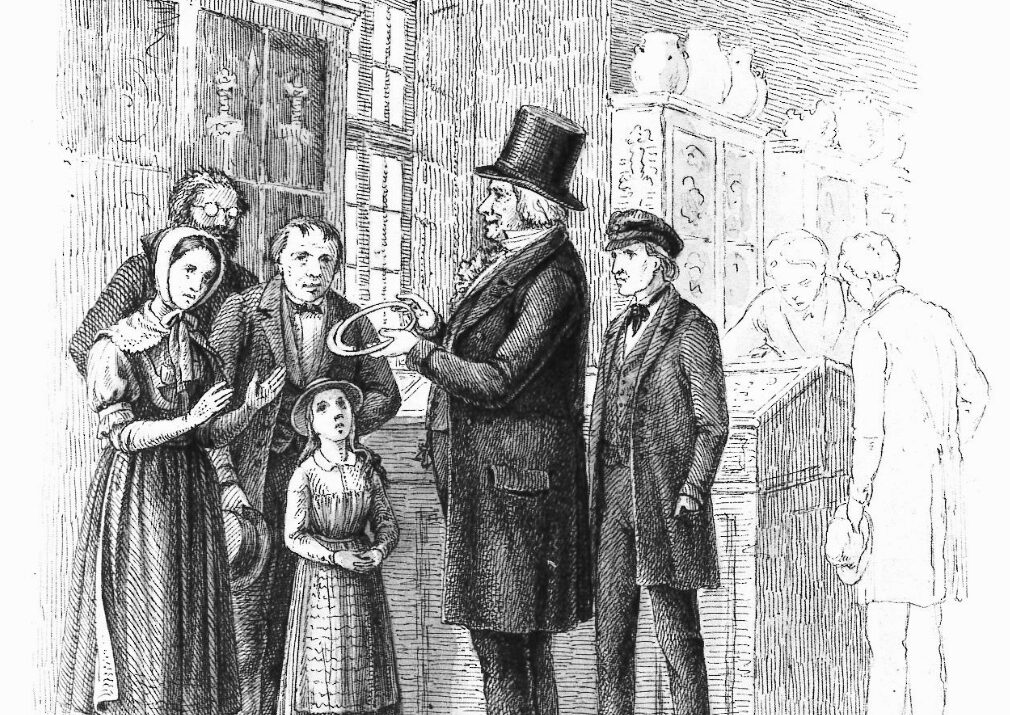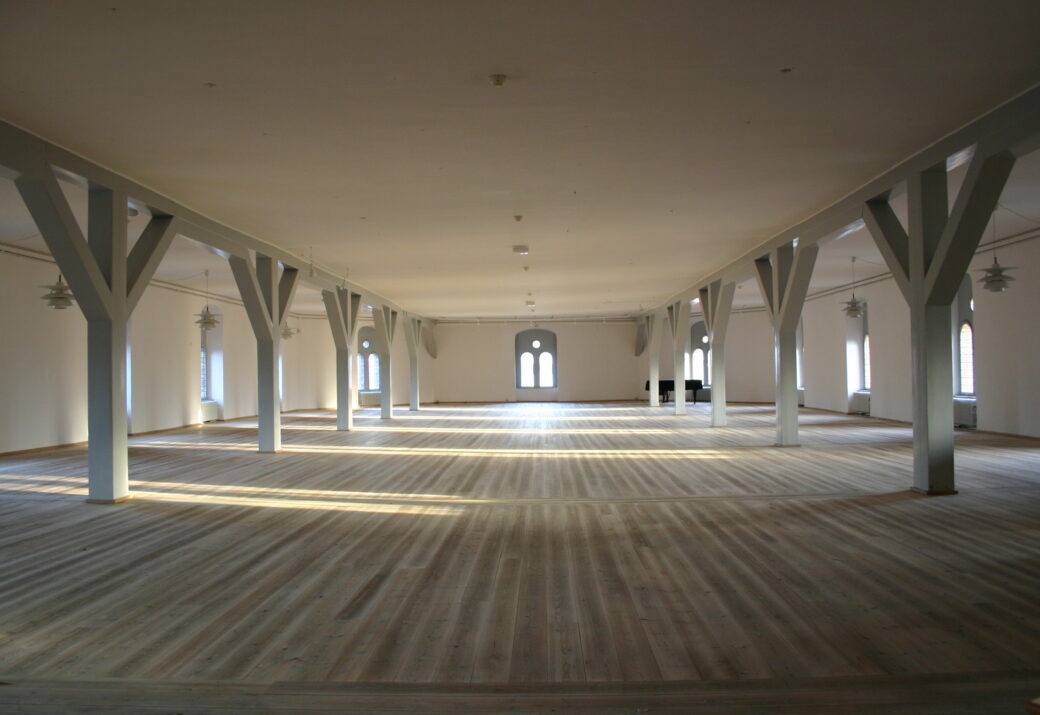This website uses cookies so that we can provide you with the best user experience possible. Cookie information is stored in your browser and performs functions such as recognising you when you return to our website and helping our team to understand which sections of the website you find most interesting and useful.

Rune Stones in the Round Tower
Apparently the Enlightenment priest Jacob Nicolai Wilse (1735-1801) was also a man of reason when it came to utilisation of space. In 1792 he published the third part of his Travel Observations in Some of the Nordic Countries (Reise-Iagttagelser i nogle af de nordiske Lande), wherein he mentions the Round Tower. It is a place he knows very well since he used to wander up and down the Spiral Ramp on his way to and from the more than 40,000 volumes in the University Library during his time of study.
In 1792 Wilse had been a priest in Norway for almost 25 years and he admits that he “has since always missed” the library. He would, however have been a poor man of the Enlightenment if he had let the nostalgia get the better of him. Instead, he has a fine suggestion for what to place inside the empty niches of the Spiral Ramp, which correspond to the openings facing Copenhagen and which were not yet covered by windowpanes at that time. “For lighting there are openings without windows, expect at the very top,” he writes, “but on the side facing the church there are only blind openings or niches in which some statues or busts would fit nicely”.
An Old Cannon
There are fourteen blind niches in total in the outer wall of the Spiral Ramp. They are not only facing the Trinity Church as Wilse indicates, some are also sporadically located in various places behind Christian IV’s rebus and the entrance portal facing the street of Købmagergade. In addition to these, are the bricked-up openings facing the hollow core, where generations of children have hidden themselves in order to shout out a well planned boo to their fellow visitors.Not too many years after Wilse’s suggestion, his wish was more or less fulfilled. In 1807, thus, three rune stones, a Roman tombstone and a cannon, which had been fished out of the sea by the island of Anholt, were placed in some of the niches. In the following years the collection was supplemented with more rune stones and a stonecoffin from the Wadden Sea Island of Föhr, which was initially referred to as a stonetrough. In 1821, ancient monuments thus occupied ten of the fourteen niches.

The Prelude to the National Museum of Denmark
It had a good reason that ancient monuments and not statues and busts found their way into the niches. In 1806 yet another man of the Enlightenment, university librarian Rasmus Nyerup (1759-1829), who was also a keen antiquarian, had been advocating for the establishment of what he called a national museum with the purpose of preserving the material cultural heritage in the realm of the Danish king. In the collection of prehistoric artefacts he established in the Library Hall above the chancel of the Trinity Church, Nyerup installed the different items he was beginning to receive from well-disposed people. In 1807 he was appointed secretary of the so-called Antiquities Commission, which is considered to be the prelude to the National Museum of Denmark.
The first three rune stones that were placed in the Spiral Ramp had led a relatively secluded life in the cemetery south of the Trinity Church, ”dem Thurme angelehnt” (”standing against the tower”) as Rasmus Nyerup writes, before they were moved into a corner of the church in 1803-04 so that they could at least be a little protected from the winds and the weather. But as one of the purposes of the Antiquities Commission was to safeguard the prehistoric antiquities, it made perfect sense to hurry up and take charge of the relics that were crammed together directly below Nyerup’s preliminary collection in the Library Hall. And so it was done.
Ole Worm
The desire to preserve the cultural heritage was actually also the main reason why the first three rune stones, which had originally been shipped in from Vordingborg, Glenstrup south of Hobro and Øster Brønderslev in Vendsyssel, came to the capital city along with several others. Two years prior to his death, antiquarian and runologist Ole Worm (1588-1654) was the force behind a royal letter in which a number of Danish fief holders were urged to ship those rune stones to Copenhagen “which We think, are better and more advantageous to gather in one place” as Frederik III writes. The first stones began to show up that same year, several of them after being taken out of the walls of local churches.
“The many stones that never reached Copenhagen despite Frederik III’s request, were significantly better protected than the ones that did”
The stones were placed on the cemetery next to the Trinity Church. As suggested by the historian Victor Hermansen (1894-1960), the choice of location was probably connected to the fact that Ole Worm in his book Runir seu Danica Literatura antiquissima (Runes or the Oldest Danish Literature), which was published in a second edition the year before, saw the runic inscriptions as examples of the oldest Danish literature. The stone books could thus join those paper books that the University Library, which was under construction at the time, was planned to house.
Victims of the Fire of Copenhagen
However, as the years went by, the safekeeping of the rune stones turned out to be so-so. In 1685 there were thirteen pieces in total, including the Romanesque tombstone that possibly was thought to be a rune stone. In 1701 it was noticed how they were lying sprawled on the cemetery, and during the Copenhagen fire in 1728 many of them were lost, just as an unverified story states that the bell ringer of the Trinity Church used some of them as foundation for his new house.
What is known for certain is that the many stones that never reached Copenhagen despite Frederik III’s request, were significantly better protected than the ones that did. In fact, there is a direct link between the careless treatment of them in the cemetery and their more respectful relocation to the Spiral Ramp on Tuesday the 11 February 1807. They remained here until March 1867 when they were relocated once again, this time to the Runic Hall in National Museum of Denmark. The niches of the Spiral Ramp were empty yet again – ready for children shouting boo, busts, or whatever might come.


